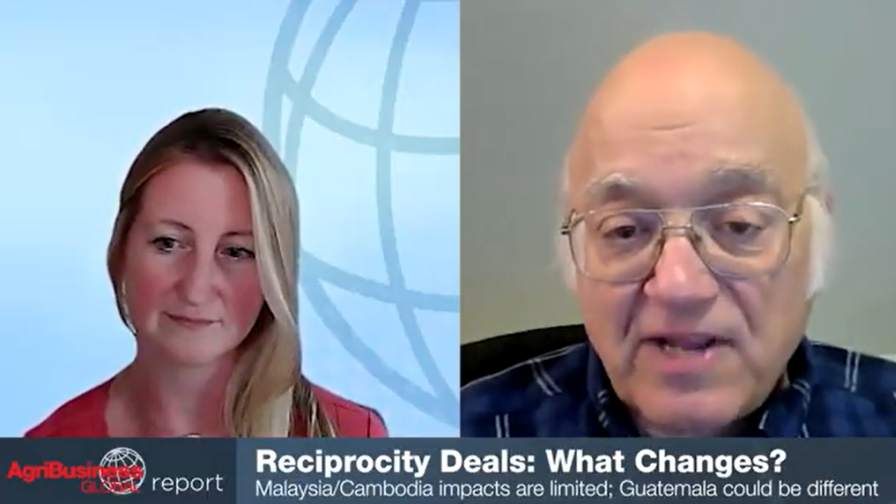Os subsídios dos EUA podem desaparecer?
Agricultores, grupos de lobby e empresas agroquímicas estão enfrentando um ambiente político complexo que pode afetar a indústria de proteção de cultivos nos próximos anos.
Ações judiciais e debates iminentes em torno do Farm Bill, cuja versão atual deve expirar em setembro de 2012, deixaram-nos imaginando o que acontecerá se os legisladores do país não chegarem a acordos sobre questões importantes, incluindo subsídios agrícolas e regulamentações de pesticidas.
Lei Agrícola de 2012
A legislação atual referente ao Farm Bill de 2012 foi suspensa enquanto os legisladores nos Estados Unidos debatem o orçamento e tentam cortar gastos para reduzir o déficit do país e, ao mesmo tempo, aumentar o teto da dívida.
Há 37 programas em 12 títulos do Farm Bill de 2008 que cessarão com a adoção do projeto de lei de 2012, e os líderes do Congresso estão mirando especificamente os subsídios agrícolas em seu planejamento de redução, de acordo com o Congressional Research Service.
Os dois partidos políticos reinantes, Republicanos e Democratas, têm tido divergências constantes sobre políticas pendentes. O processo legislativo desacelerou a um ritmo de tartaruga, forçando os membros do Congresso a discutir detalhes minuciosos de projetos de lei pendentes por meses, de acordo com muitas fontes de Washington.
“O impasse atual no Capitólio obriga a uma legislação melhor”, afirma John Boling, diretor de assuntos legislativos da Associação de Produtores e Distribuidores de Produtos Químicos (CPDA). “Antes, os projetos de lei vinham da liderança, e agora há muito mais abertura para permitir o debate.”
Discussões orçamentárias recentes estão intimamente ligadas às medidas delineadas na Lei Agrícola de 2012. A Lei Agrícola de 2008 continha políticas relacionadas a subsídios para agricultores de commodities selecionadas, incluindo trigo, grãos para ração, algodão, arroz, sementes oleaginosas, amendoim, açúcar e laticínios, de acordo com um relatório recente do Serviço de Pesquisa do Congresso.
“A situação orçamental cria incerteza no relacionamento com as agências”, afirma Scott Kuschmider, diretor de assuntos governamentais da Monsanto. “A estrutura dos projetos de lei de subsídios é uma preocupação.”
O governo dos EUA deve analisar as implicações de longo prazo do corte de subsídios agrícolas e programas nacionais de nutrição, como cupons de alimentação, devido às potenciais consequências negativas para a renda agrícola, o setor agrícola e a economia, diz Kuschmider.
Bob Hooten, gerente regional de vendas técnicas da Corporação FMC, não vê muita mudança no uso de insumos com uma redução nos subsídios, a menos que os preços das commodities comecem a cair significativamente, diz ele.
“Se continuarmos a usar as culturas para a produção de energia, isso deverá manter os preços das culturas altos”, diz Hooten. “Os agricultores ainda terão lucro, só que menor se os preços caírem. Aí, eles vão analisar os custos dos insumos.”
Com cortes de gastos no horizonte, formuladores e fabricantes de pesticidas estão reconhecendo o impacto das negociações de redução orçamentária e a percepção de que alguns programas serão cortados.
“A realidade é que haverá cortes generalizados”, afirma o Dr. Michael White, diretor de assuntos regulatórios da CPDA.
Regulamentos e processos judiciais da EPA
O Agência de Proteção Ambiental foi atormentada por uma enxurrada de ações judiciais que podem dificultar a entrada de produtores de agroquímicos no mercado dos EUA.
Grupos ambientalistas têm prejudicado os esforços da EPA para regulamentar efetivamente o setor de proteção de cultivos, dificultando a entrada de novas empresas agroquímicas. Ao longo dos anos, muitos processos judiciais pedindo a reforma dos processos de regulamentação de pesticidas esgotaram os recursos legais da agência.
“Quanto custa quando grupos ambientalistas estão processando é uma preocupação”, diz a Dra. Susan Ferenc, presidente da CPDA.
O processo mais recente, denominado "Mega Suit" (Processo Mega), pode afetar 381 ingredientes ativos de pesticidas em 49 estados, com base no bem-estar de mais de 200 espécies ameaçadas ou em perigo de extinção. O processo alega que a EPA viola a Lei de Espécies Ameaçadas (ESA) e não consultou adequadamente os serviços da ESA antes de registrar novos pesticidas.
“Isso pode impedir o progresso agrícola”, diz Jay Vroom, presidente da CropLife América.
No entanto, o processo de revisão dos serviços que a EPA utiliza para avaliar novas formulações está quebrado. Inconsistências entre o tipo de pesquisa usada para avaliar um produto estão afetando a capacidade da EPA de julgar com imparcialidade se ele é seguro para uso humano e se cumpre as diretrizes da Lei de Espécies Ameaçadas.
• Exportações agrícolas dos EUA aumentarão 26%
“Um grande objetivo da indústria para o próximo ano é que o processo de consulta seja quebrado”, diz o Dr. Ferenc.
Grande parte da ciência não é revisada por pares e pode ser considerada obscura, e não há um padrão consistente para a avaliação de novas formulações. A ESA deve ser aprimorada conforme está escrita, em vez de tentar desmontá-la completamente e criar um novo processo de consulta, o que poderia consumir recursos e desperdiçar o dinheiro dos contribuintes, afirma o Dr. Ferenc.
Além disso, muitos especialistas da EPA com conhecimento especializado estão se aposentando, o que pode moldar o processo de registro nos EUA nos próximos anos. Novos contratados, mais jovens, não têm a experiência necessária para permitir um processo ágil e preciso, o que pode dificultar o registro de produtos no futuro.
“O problema é substituir aqueles com pouca experiência em EPA por pessoas qualificadas”, diz o Dr. Ferenc.





